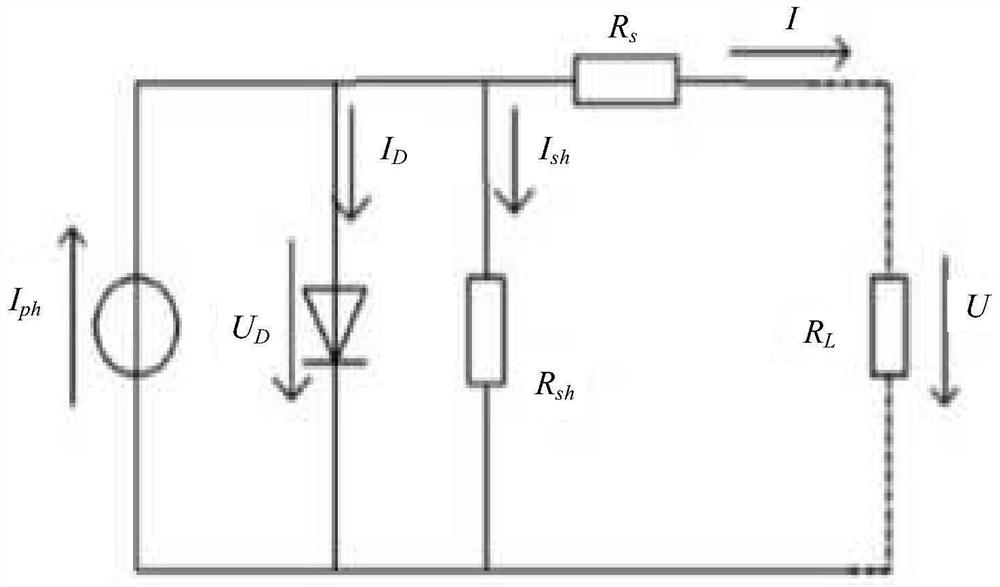Equivalent modeling method for photovoltaic cell
A photovoltaic cell and equivalent modeling technology, applied in the field of effective modeling, can solve problems such as complex calculations and low model accuracy, and achieve the effects of avoiding iterative calculations, easy calculations, and avoiding complex
- Summary
- Abstract
- Description
- Claims
- Application Information
AI Technical Summary
Problems solved by technology
Method used
Image
Examples
Embodiment Construction
[0032] Below, according to the accompanying drawings, preferred embodiments of the present invention are given and described in detail, so that the functions and features of the present invention can be better understood.
[0033] Embodiments of the present invention include a photovoltaic cell equivalent modeling method, the model used in the method is as figure 1 shown. In this model, I sh Is the photogenerated current, and its value is proportional to the area of the photovoltaic cell and the intensity of the incident light; I D is the current flowing through the equivalent diode; I is the load current output by the photovoltaic cell; U D Is the terminal voltage of the equivalent diode. Under the condition of no light, the basic behavior of the photovoltaic cell is similar to that of an ordinary diode; U is the voltage at both ends of the load; R L is the load resistance of the battery; R S is the equivalent series resistance; R sh is the equivalent parallel resistan...
PUM
 Login to View More
Login to View More Abstract
Description
Claims
Application Information
 Login to View More
Login to View More - R&D
- Intellectual Property
- Life Sciences
- Materials
- Tech Scout
- Unparalleled Data Quality
- Higher Quality Content
- 60% Fewer Hallucinations
Browse by: Latest US Patents, China's latest patents, Technical Efficacy Thesaurus, Application Domain, Technology Topic, Popular Technical Reports.
© 2025 PatSnap. All rights reserved.Legal|Privacy policy|Modern Slavery Act Transparency Statement|Sitemap|About US| Contact US: help@patsnap.com



